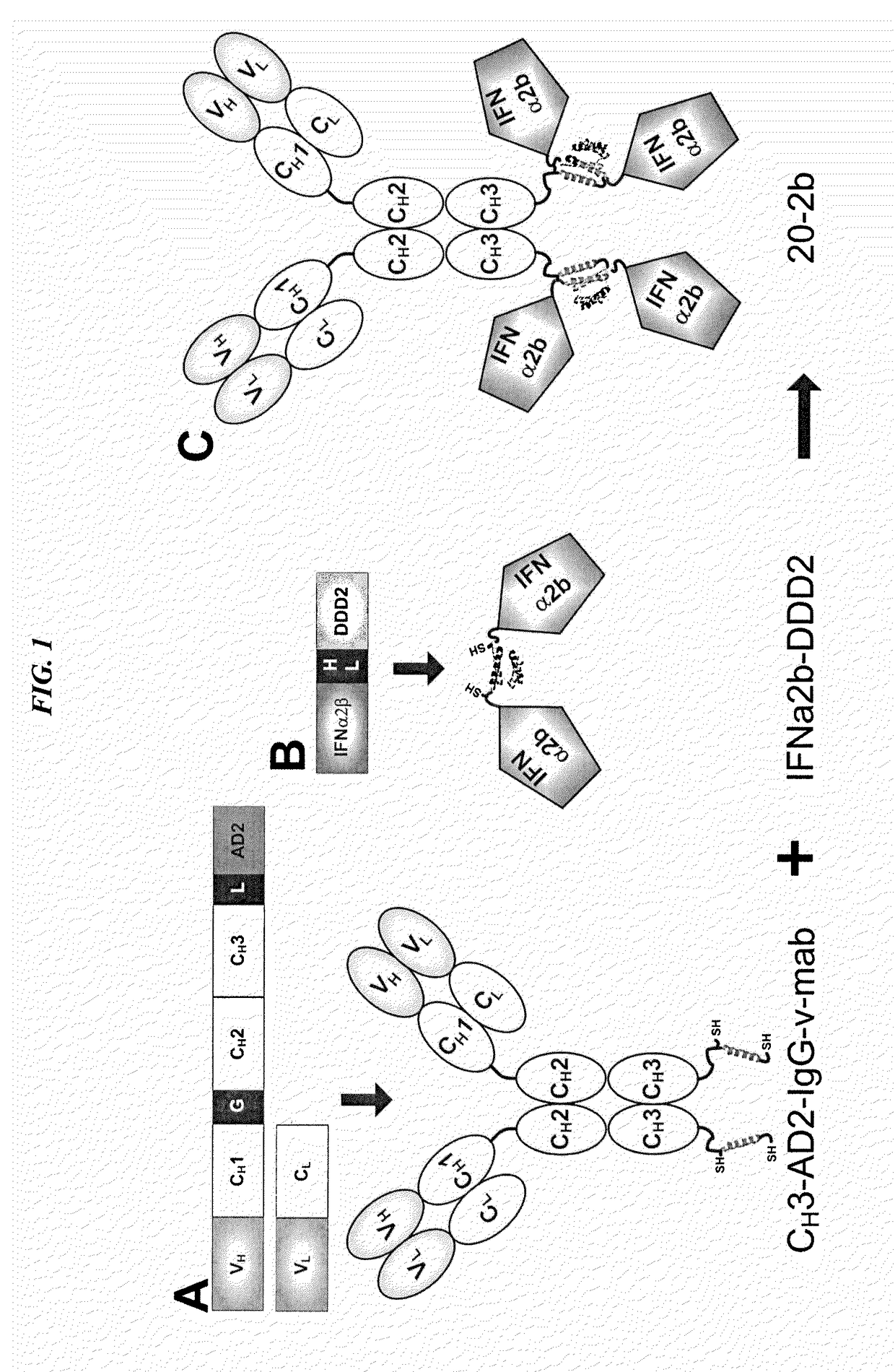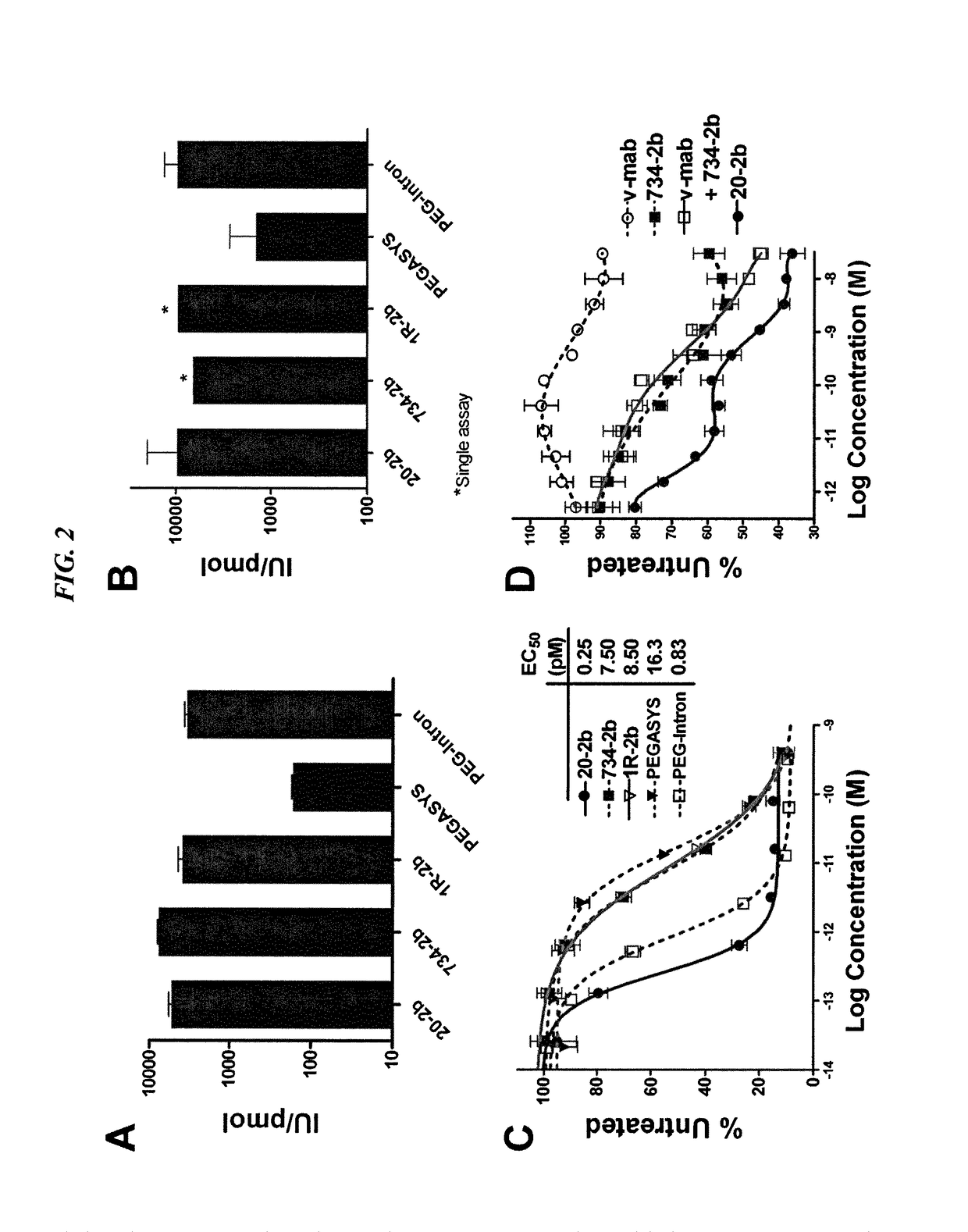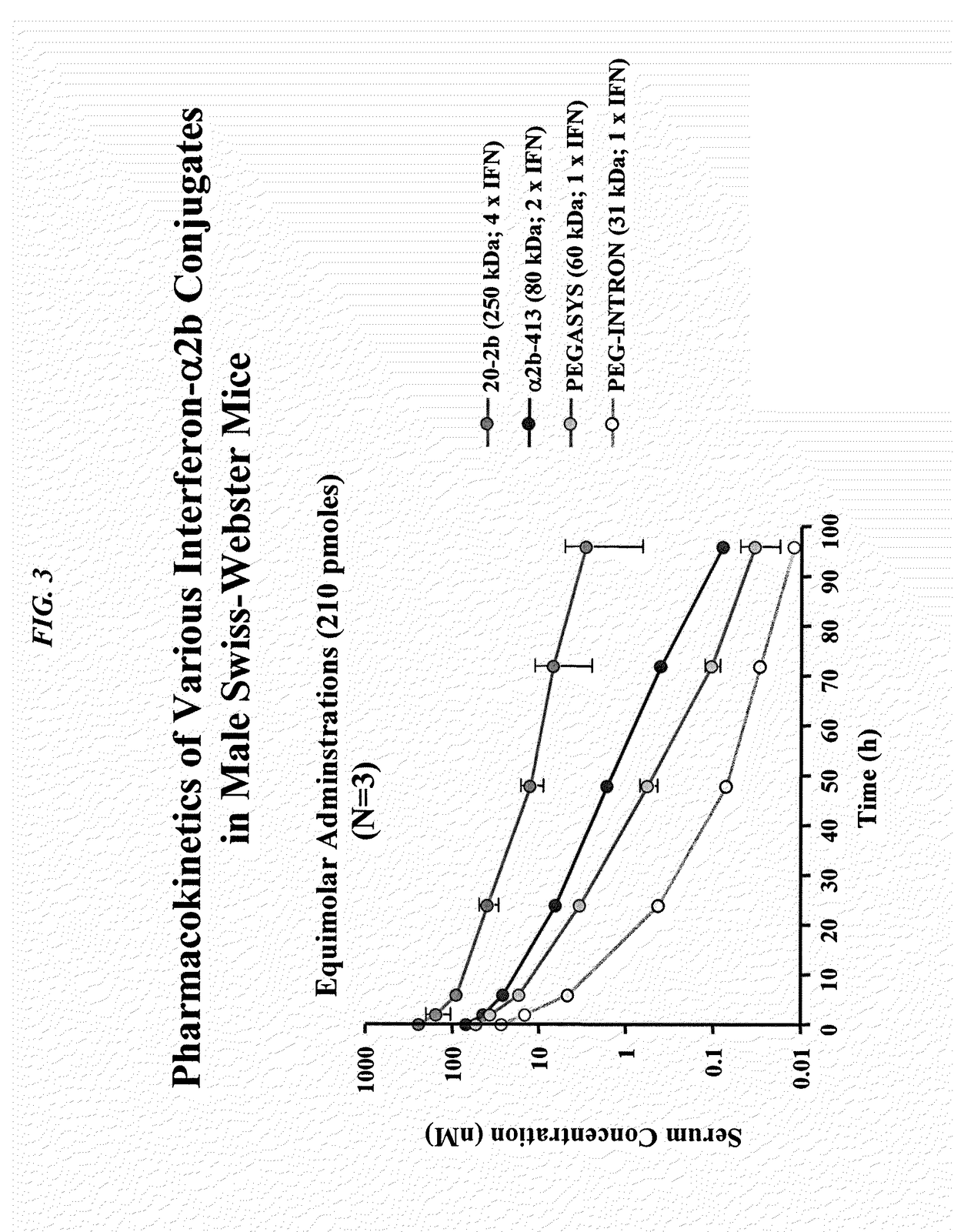Modular method to prepare tetrameric cytokines with improved pharmacokinetics by the dock-and-lock (DNL) technology
a technology of tetramer cytokines and modules, applied in the direction of peptides, drug compositions, immunological disorders, etc., can solve the problems of primarily hindering the prognosis of ifn as a cancer treatmen
- Summary
- Abstract
- Description
- Claims
- Application Information
AI Technical Summary
Benefits of technology
Problems solved by technology
Method used
Image
Examples
example 1
CH3-AD2-IgG Expression Vectors
[0130]The pdHL2 mammalian expression vector has been used for the expression of recombinant IgGs (Qu et al., Methods 2005, 36:84-95). A plasmid shuttle vector was produced to facilitate the conversion of any IgG-pdHL2 vector into a CH3-AD2-IgG-pdHL2 vector. The gene for the Fc (CH2 and CH3 domains) was amplified by PCR using the pdHL2 vector as a template and the following oligonucleotide primers:
[0131]
Fc BglII LeftAGATCTGGCGCACCTGAACTCCTG(SEQ ID NO: 1)Fc Bam- EcoRI RightGAATTCGGATCCTTTACCCGGAGACAGGGAGAG.(SEQ ID NO: 2)
[0132]The amplimer was cloned in the pGemT PCR cloning vector (Promega). The Fc insert fragment was excised from pGemT with Xba I and Bam HI and ligated with AD2-pdHL2 vector that was prepared by digesting h679-Fab-AD2-pdHL2 (Rossi et al., Proc Natl Acad Sci USA 2006, 103:6841-6) with Xba I and Bam HI, to generate the shuttle vector Fc-AD2-pdHL2. To convert IgG-pdHL2 expression vectors to a CH3-AD2-IgG-pdHL2 expression vectors, an 861 bp B...
example 2
Production of CH3-AD2-IgG
[0139]Transfection and Selection of Stable CH3-AD2-IgG Secreting Cell Lines
[0140]All cell lines were grown in Hybridoma SFM (Invitrogen, Carlsbad Calif.). CH3-AD2-IgG-pdHL2 vectors (30 μg) were linearized by digestion with Sal I restriction endonuclease and transfected into Sp2 / 0-Ag14 (2.8×106 cells) by electroporation (450 volts, 25 μF). The pdHL2 vector contains the gene for dihydrofolate reductase allowing clonal selection as well as gene amplification with methotrexate (MTX).
[0141]Following transfection, the cells were plated in 96-well plates and transgenic clones were selected in media containing 0.2 μM MTX. Clones were screened for CH3-AD2-IgG productivity by a sandwich ELISA using 96-well microtitre plates coated with specific anti-idiotype MAbs. Conditioned media from the putative clones were transferred to the micro-plate wells and detection of the fusion protein was accomplished with horseradish peroxidase-conjugated goat anti-human IgG F(ab′)2 (J...
example 3
Generation of DDD-Module based on Interferon (IFN)-α2b
[0144]Construction of IFN-α2b-DDD2-pdHL2 for Expression in Mammalian Cells
[0145]The cDNA sequence for IFN-α2b was amplified by PCR resulting in sequences comprising the following features, in which XbaI and BamHI are restriction sites, the signal peptide is native to IFN-α2b, and 6 His is a hexahistidine tag: XbaI---Signal peptide---IFNα2b---6 His---BamHIH (6 His disclosed as SEQ ID NO: 28). The resulting secreted protein consisted of IFN-α2b fused at its C-terminus to a polypeptide of the following sequence:
[0146]
(SEQ ID NO: 3)KSHHHHHHGSGGGGSGGGCGHIQIPPGLTELLQGYTVEVLRQQPPDLVEFAVEYFTRLREARA.
[0147]PCR amplification was accomplished using a full length human IFNα2b cDNA clone (Invitrogen Ultimate ORF human clone cat# HORF01 Clone ID IOH35221) as a template and the following oligonucleotides as primers:
[0148]
IFNA2 Xba I Left(SEQ ID NO: 4)TCTAGACACAGGACCTCATCATGGCCTTGACCTTTGCTTTACTGGIFNA2 BamHI right(SEQ ID NO: 5)GGATCCATGATGGTGATGAT...
PUM
 Login to View More
Login to View More Abstract
Description
Claims
Application Information
 Login to View More
Login to View More - R&D
- Intellectual Property
- Life Sciences
- Materials
- Tech Scout
- Unparalleled Data Quality
- Higher Quality Content
- 60% Fewer Hallucinations
Browse by: Latest US Patents, China's latest patents, Technical Efficacy Thesaurus, Application Domain, Technology Topic, Popular Technical Reports.
© 2025 PatSnap. All rights reserved.Legal|Privacy policy|Modern Slavery Act Transparency Statement|Sitemap|About US| Contact US: help@patsnap.com



